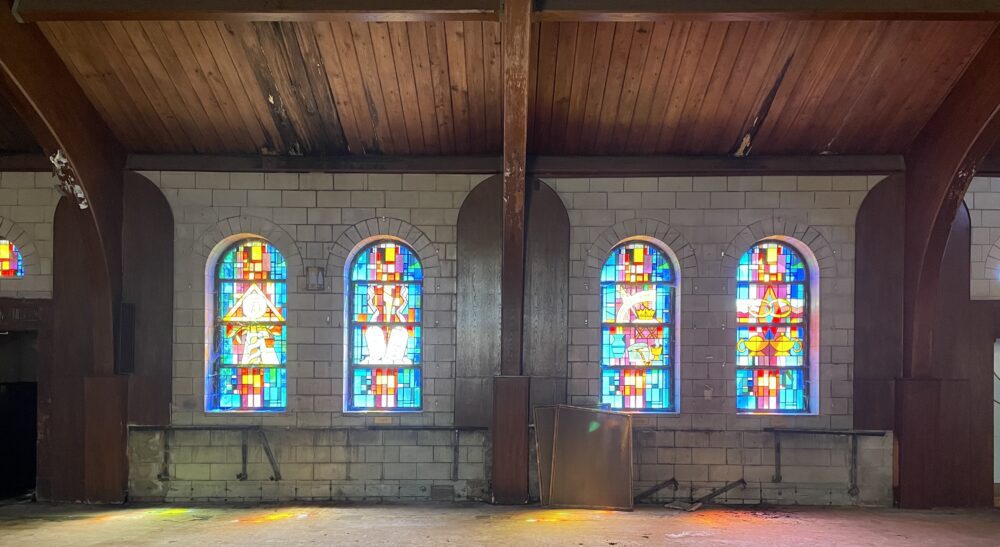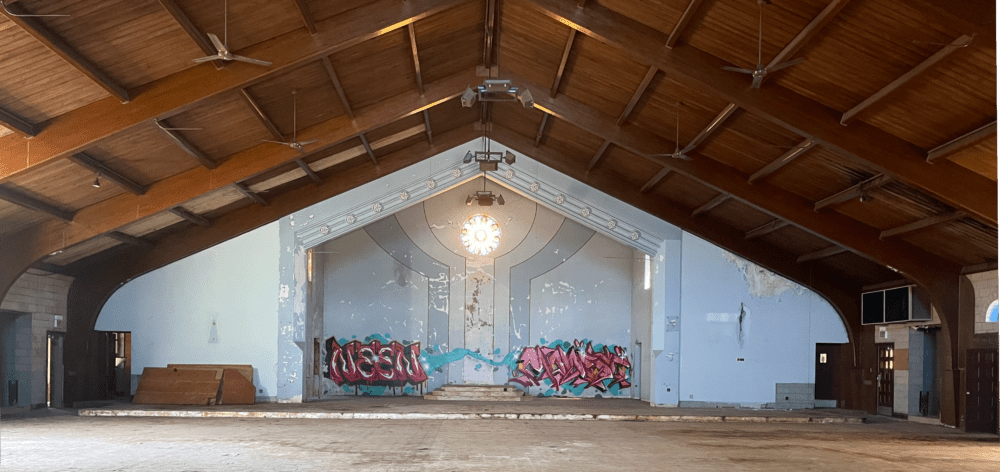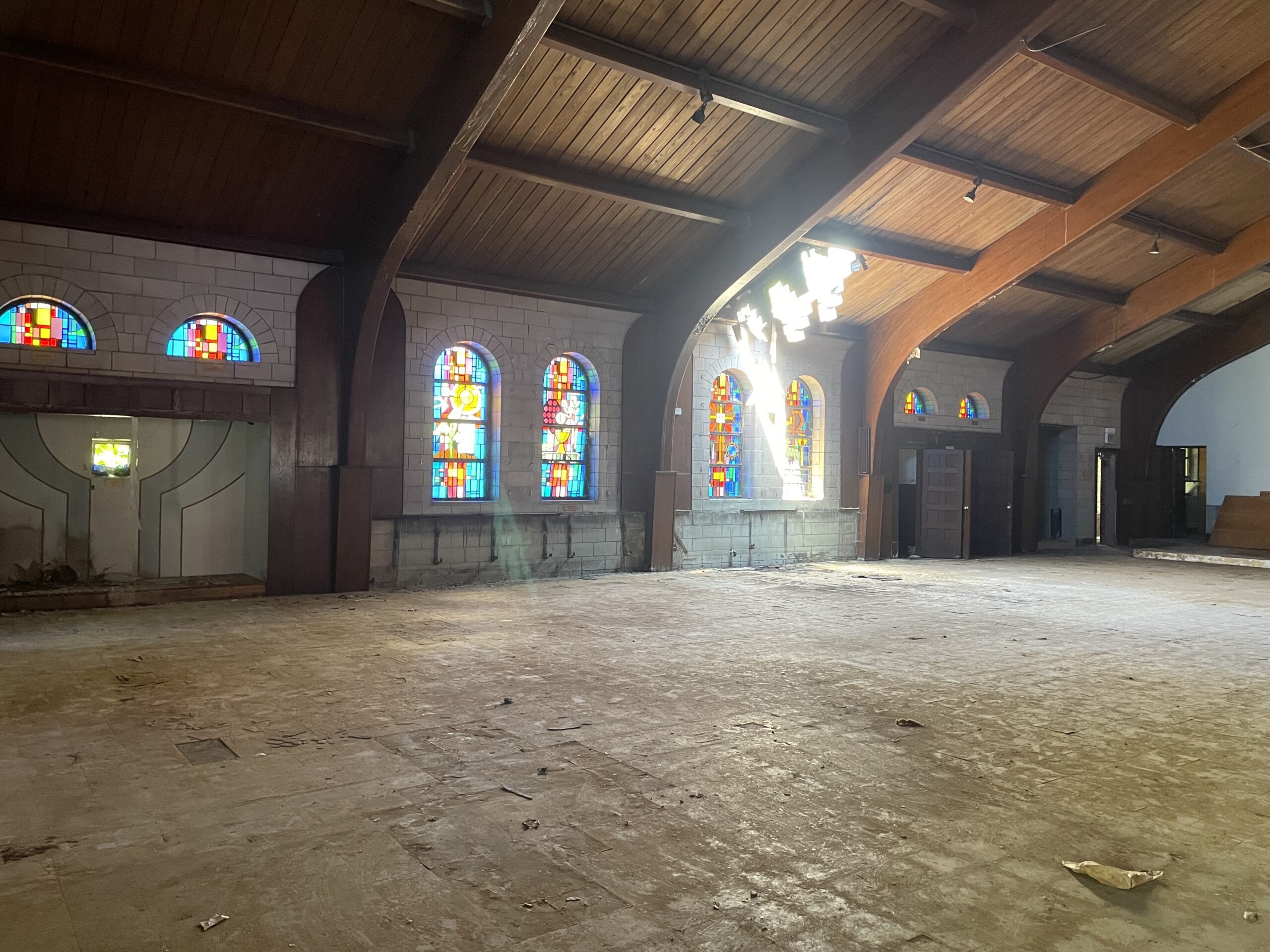Excitement over Robert Francis Prevost’s ascendancy to becoming Pope Leo XIV is inescapable in his hometown of Chicago. Billboard ads on the highway read “Deep Dish. Now available in Rome,” followed by a congratulatory note. The Cubs declared premature victory by claiming the pope is a Cubs fan, only for his brother to tell the media that “he’s a Sox fan”—evidenced by his cameo in the 2005 World Series broadcast.
Pope Leo spent his early years in the far South Side suburbs of Dolton and Riverdale, where he was a choir boy and an altar boy at St. Mary of the Assumption Church. As the population in the deindustrializing town plummeted, so too did church attendance, forcing the parish to shutter in 2011. It is no longer home to the worship it once was: there aren’t any benches, altars, or podiums. The first thing you notice upon walking in is a huge work of neon-color graffiti. To the left, a large hole in the roof presides over the tattered floors. The stained glass windows, however, remain intact.

The Sunday morning following the conclave brought visitors all across Chicagoland to the church. Some said they attended the church as kids. As we took a look inside the Pope’s boyhood church, one visitor told me that, as fewer Americans attend Mass, abandoned churches have become more common. A church she visited in New Buffalo was converted into a brewery. A church in Chicago’s Ukranian Village neighborhood was transformed into a condo unit. Some critics consider it sacrilegious, but the alternative—vacated churches being demolished as formerly tight-knit communities evaporate—is not appealing either.
Joe Hall, who was outside Pope Leo’s boyhood church greeting visitors, purchased the property in 2022. He is a Catholic and, like me, resides in Hyde Park. “I would like to say that I’m led by the Holy Spirit,” Hall told me. When he started searching for properties to run community programs, Hall wanted to organize everything from one location. Upon seeing St. Mary of the Assumption, he knew it was right for him, despite its condition. “I knew the moment I walked in, ‘Okay, this is what the Holy Spirit wants it to be. Figure it out. Let’s do it.’” Like almost everyone else, it never occurred to Hall that the church would one day be known as the boyhood church of the Pope. Nonetheless, he always intended to preserve the church and try to bring service back to the establishment, despite the high price estimates he got from contractors.

Dolton is one of many communities in the greater Chicago area to suffer from decades of economic malaise and deindustrialization. In February, a Dolton glass plant closed, laying off 316 employees, and Hall recounted a conversation with a community member who had to sell her house after the warehouse she worked at was shut down. The Census Bureau estimates that between April 2020 and July 2023 the village’s population dropped by nearly five percent. “Dolton had its glory days,” Hall told me. “There are certain parts of Chicago that I’m sure were once thriving neighborhoods, communities with hope and vision by their residents. Things happen where some communities just go underserved based on the economic change of things, and I think this area was one of those areas that might have been affected by the steel mill or factories laying off.”
Hall was working on a community broadband project the day before Pope Leo made his first papal appearance in St. Peter’s Square. He has since been in contact with the Vatican over renovation plans, and feels confident that the news—and the donations to come—will rehabilitate the church into a pillar of the community. Along with reintroducing worship and his broadband project, he plans to start a food pantry and a workforce training center.
Chalk drawings were prominent on the pavement just outside, standing in contrast to the spray-paint graffiti inside the church. “Happy Mother’s Day, Millie!” one mural read in both Spanish and English, addressing Pope Leo’s mother. “Pray for us.”
“It not just gives us hope,” Hall said of the Dolton native’s papacy. “It gives us a new sense of purpose and pride.”

